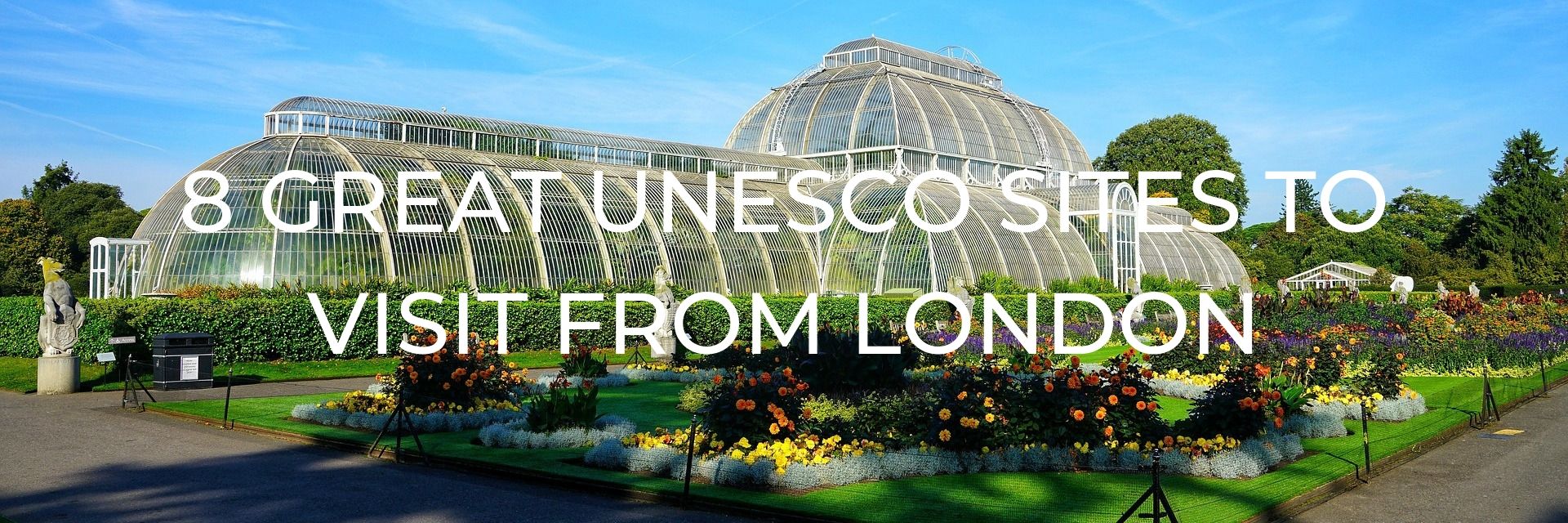
UNESCO World Heritage sites and London– what a perfect combination. And did you know that there are EIGHT sites either in London or just a short distance away that could be visited on day trip? There are!
Want to save this for later? Click the Pinterest button on the left for a pinnable image!
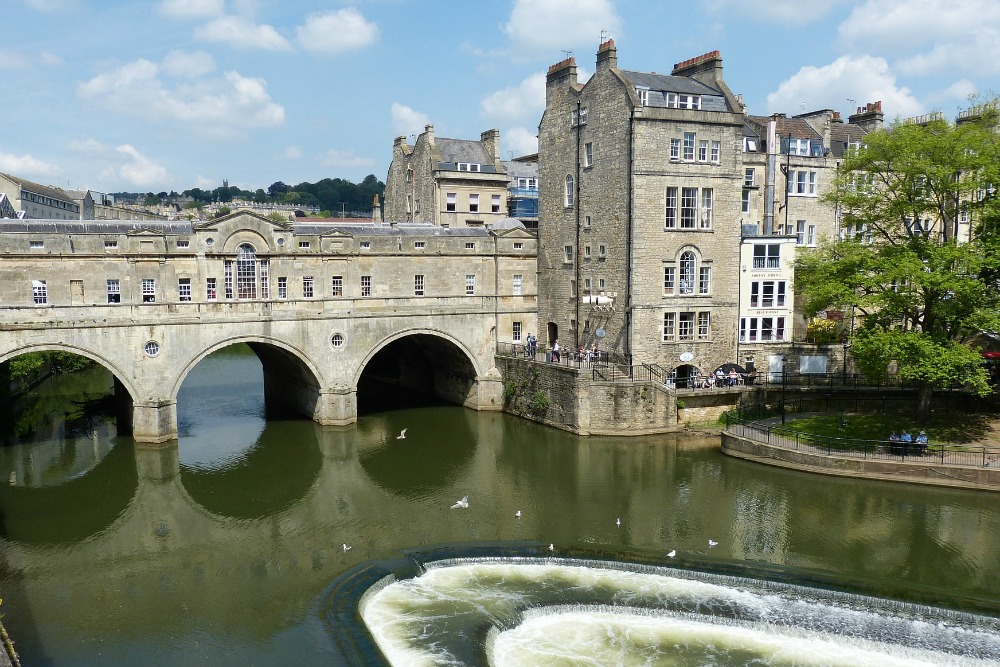
Significant because of their natural or cultural heritage, UNESCO sites are some of the greatest treasures the world has to offer so the UNESCO World Heritage list is a great place to start when planning your trip anywhere in the world. Because the list is SO big – currently 1000+ sites and growing – today I thought I’d get you started with eight GREAT sites you can visit if you will be in the London area. I can personally vouch for seven of the sites, but you know the other one is high on my list for my next trip back to London as I work towards my personal goal to see 500 sites in my lifetime.
So let’s get to it and see what London and its surrounding area has to offer!
STONEHENGE, AVEBURY, AND ASSOCIATED SITES
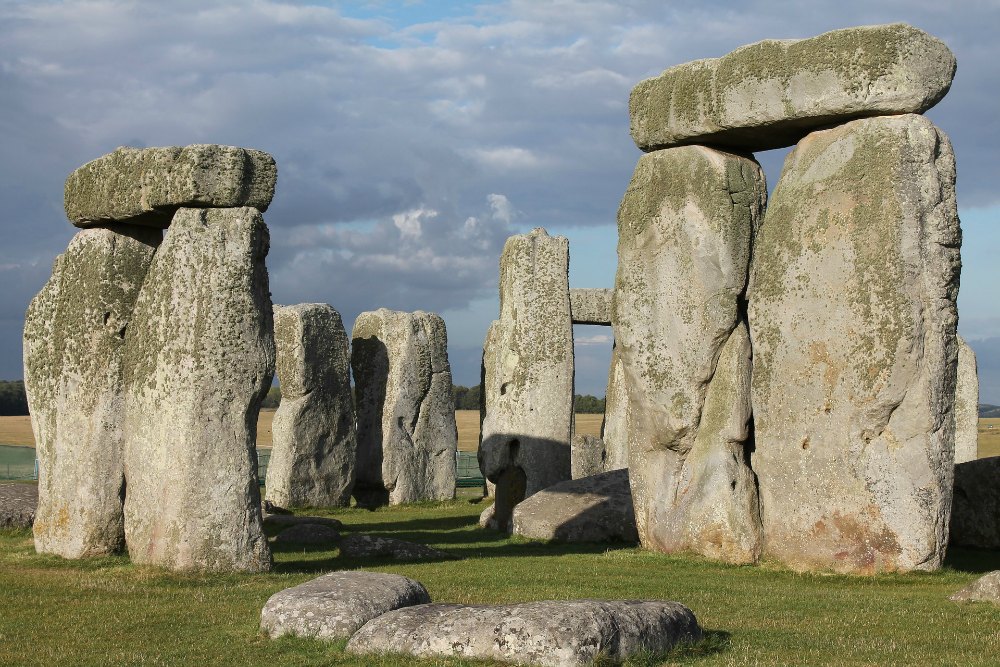
Inscribed to World Heritage List: 1986
Stonehenge Website || UNESCO World Heritage List Entry
Stonehenge and Avebury are among the most famous groups of megaliths in the world, and likely on just about everyone’s UK bucket list to visit at some point in their lifetime.
Made up of circles of menhirs (standing stones) arranged in a pattern of astronomical significance, both sites are still being explored and researched to try and find out their purpose. Stonehenge was built in phases between 3100-1100 BC, and its size, height and perfection make it, in some folk’s opinion, one of the most impressive megalithic monuments in the world. Avebury, although less known, is actually Europe’s largest circular megalithic ensemble with its exterior circle made up of some 100 menhirs.
In addition to these well-known sites, this UNESCO entry also includes several other Neolithic satellite sites around Avebury, including Silbury Hill (largest known man-made earthen mound in Europe), Windmill Hill, and West Kennet.
Although a visit to Stonehenge is likely to take you the most time to get to from London of all the sites on this list, it is still possible to see this site in a day because it doesn’t take that long to visit the site.
Approximate Travel Time from London: 1 hr 30 min by car | 1 hr 30 min by train to Salisbury (+ bus) | 2 hr 30 min by bus –>For complete travel information click here.
BLENHEIM PALACE
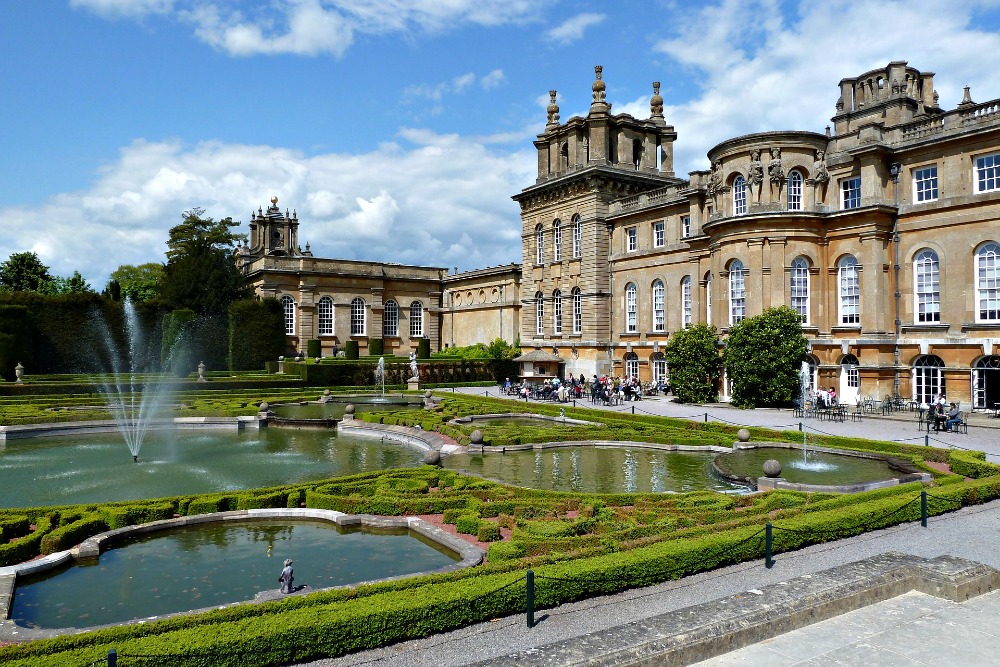
Inscribed to World Heritage List: 1987
Blenheim Palace Website || UNESCO World Heritage List Entry
Built as a thank you gift to the Duke of Marlborough by Queen Anne for his military victories against the French, Blenheim Palace was designed in a style that helped to kick off the English Romantic movement. A little bit baroque, reminiscent of Elizabethan houses, and a touch of Italian influence like Versailles, and this place looks amazing and is definitely on my list to see sooner than later.
Currently owned by the 12th Duke of Marlborough, the family welcomes you to tour the palace and the grounds. On a visit, you can see things like the Clock Tower, Great Hall, China Anteroom, drawing rooms, saloon, library, and a chapel. After touring the palace there are 2000 acres of exquisitely designed formal Italian gardens, Water Terraces, a Secret Garden, Arboretum, and a Marlborough Maze! In addition, there is a great park to explore that was designed by the famous ‘Capability’ Brown to appear “romantically natural”.
In addition to all this, Blenheim Palace was the birthplace of Winston Churchill in 1874 and there is an exhibit about the life of former Prime Minister, along with the Churchill Memorial Garden.
Approximate Travel Time from London: 1 hr by car | 1 hr 15 min by train | 1 hr 40 min by bus –>For complete travel information click here.
More photos can be found at Our Place- The World Heritage Collection
READ MORE: Looking for more great UNESCO sites to visit in the UK? Check out this guide to Scotland’s UNESCO World Heritage sites!
PALACE OF WESTMINSTER AND WESTMINSTER ABBEY, INCLUDING SAINT MARGARET’S CHURCH
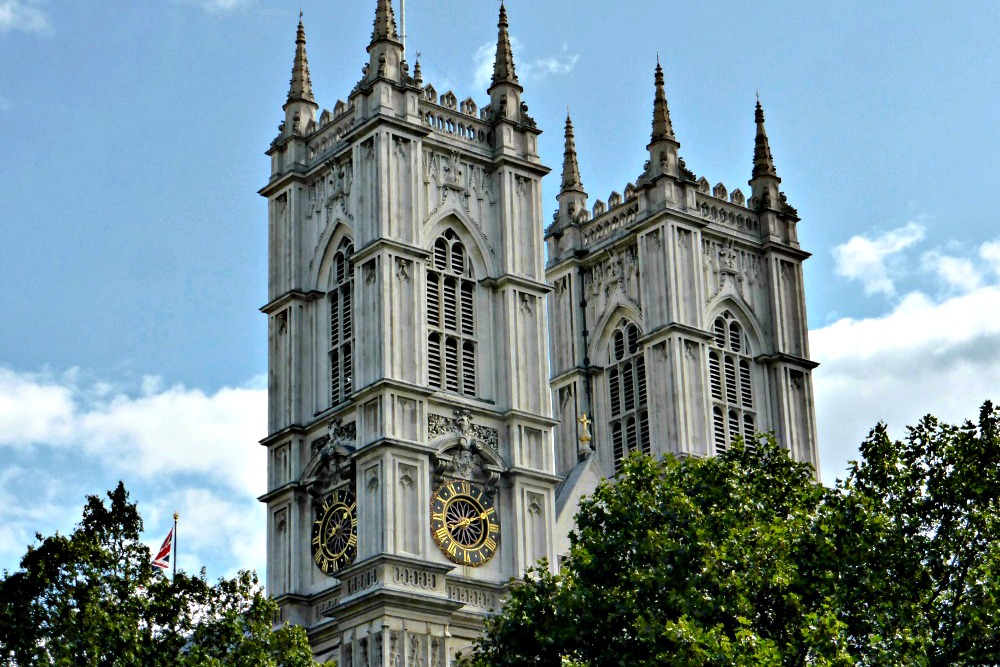
Inscribed to World Heritage List: 1987
Westminster Abbey Website || Palace of Westminster Website || UNESCO World Heritage List Entry
The whole ensemble of buildings in this UNESCO entry is basically a “veritable museum of the history of the United Kingdom”. All the buildings are associated with the history of the oldest parliamentary monarchy- Westminster Abbey is the site of coronations of kings and queens since 1066, the House of Commons used to meet in the refectory in the Middle Ages, and St. Margaret’s church is known as “the parish church of the House of Commons”. It has been a symbol of the monarchy, religion, and power since Edward the Confessor built his palace and church in the 11th century.
Even as the United Kingdom has changed throughout the centuries, from a feudal society to a modern democracy, these buildings have maintained their original functions and play a great role in society.
A visit to Westminster Palace will take you through the House of Lords, House of Commons, the Jewel Tower, and Westminster Hall. UK residents can even climb the tower to see Big Ben up close and personal. All of this is contained within a beautiful Neo-Gothic designed building that really is a must-see on any trip to London.
Westminster Abbey, designed in slightly different, although no less beautiful, English Gothic style, sits right next to Westminster Palace and is chock full of tombs and monuments (more than 600 in fact) of the who’s who of English history. Beginning with Edward the Confessor who built the original palace and church, to Elizabeth I, and 26 other kings and queens, and the Tomb of the Unknown Warrior from the Great War who now rests with kings. Memorials can be found for William Blake, Isaac Newton, and Robert Browning, just to name a few.
St. Margaret’s Church sits between the Abbey and Houses of Parliament and is the ideal contrast to the grandeur of the Abbey, reflecting the power of Parliament instead of royal association. Many Members of Parliament use the church for their weddings, baptisms, and other services, following in the footsteps of Samuel Pepys and Winston Churchill both of whom were married here.
Approximate Travel Time from London: None! Right on the banks of the Thames, you can’t miss it. Closest tube stops are St.James’ Park and Westminster.
CITY OF BATH
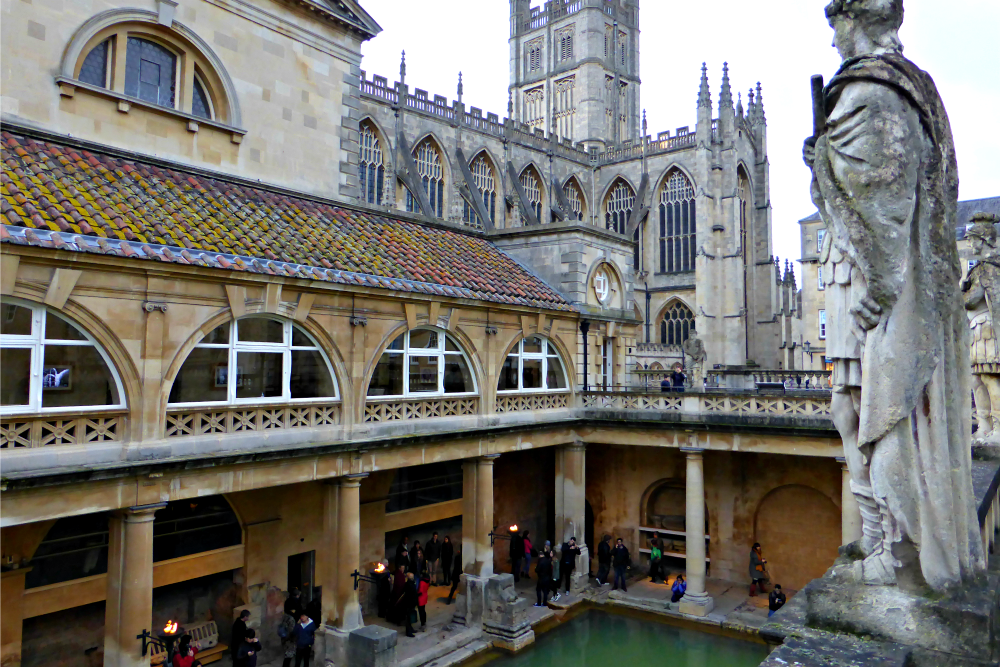
Inscribed to World Heritage List: 1987
City of Bath Website || UNESCO World Heritage List Entry
Founded by the Romans as a thermal spa, Bath has a very rich architectural heritage which reflects several periods throughout the city’s history.
The town grew around a temple the Romans built to the goddess Sulis around the year 60 AD on the site of a geothermal spring. Today the Roman Baths are likely the biggest draw to the city and for good reason as they are fascinating to visit. In the 11th century, Bath succeeded Wells as the seat of Somerset and their abbey became Bath Cathedral, although this was later replaced by an even grander cathedral to match Bath’s new status.
Bath then thrived as a centre of the wool industry until its decline in the 17th century, by which time the city was attracting wealthy visitors to ‘take the waters’. In the 18th century Bath really became what we know it for today- an elegant and fashionable spa town with gorgeous Palladian buildings mixed with the Roman spas that was the place to see and be seen.
Approximate Travel Time from London: 2 hrs by car | 1 hr 30 min by train | 2 hrs 45 min by bus –>For complete travel information click here.
READ MORE: Weekend Guide to Bath: 48-Hour Itinerary
TOWER OF LONDON
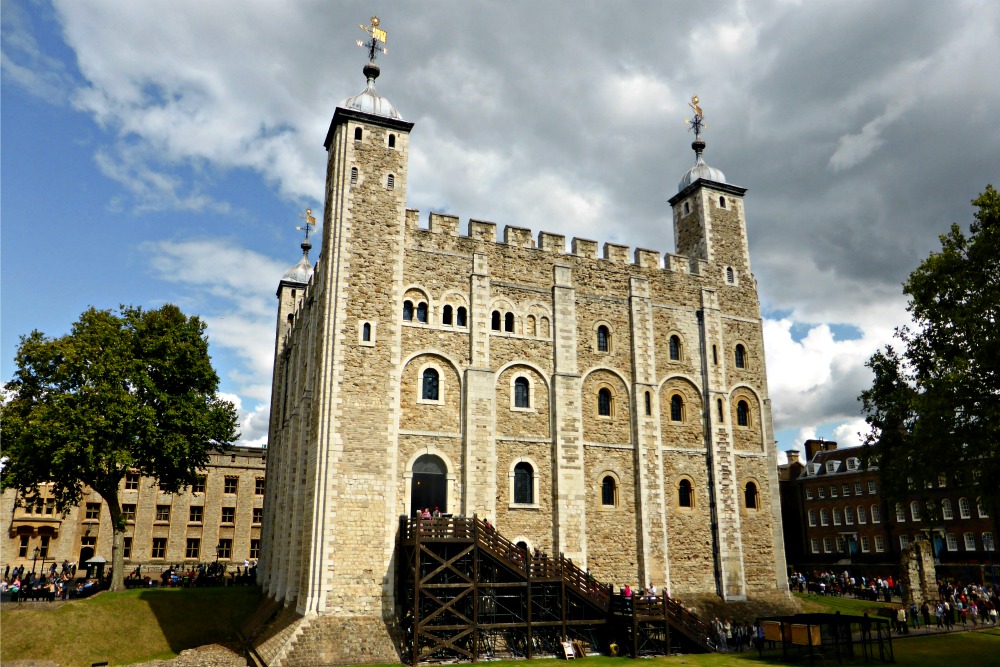
Inscribed to World Heritage List: 1988
Tower of London Website || UNESCO World Heritage List Entry
Built on the Thames by William the Conqueror in 1066, the Tower of London was meant to protect London, assert William’s power, as well as provide a gateway to the city. It is the most complete example of an 11th-century fortress remaining in Europe and has come to be seen as a symbol of royalty in England.
The Tower is a complex made up of fortifications, courtyards and various other buildings, with the most impressive of these being the White Tower as its centrepiece. Although never really intended to be, it has served as a royal residence. Its main purpose was really to be a stronghold with its curtain walls, moats, and ditches built by kings along the centuries.
It is also the setting for key historical events in European history such as the imprisonment of Edward V and his younger brother in the 15th century, and four Queens of England imprisoned in the 16th century whereby only Elizabeth I escaped the executioner’s axe.
Today the Tower of London is well worth several hours for a visit. Starting with a tour and tales by one of the Yeoman Warders, then on to see the Crown Jewels, exhibits in the White Tower, Medieval Tower, Bloody Tower, and Beauchamp Tower, the Traitor’s Gate, Scaffold Green, and the Chapel Royal.
Approximate Travel Time from London: None! It’s right in the middle of London next to the very famous Tower Bridge. Closest tube stops are Tower Hill and Fenchurch Street, but it could also be reached via London Bridge tube stop with a 15-minute walk that goes across the Tower Bridge.
READ MORE: Guide to Visiting the Tower of London
CANTERBURY CATHEDRAL, ST. AUGUSTINE’S ABBEY, AND ST. MARTIN’S CHURCH
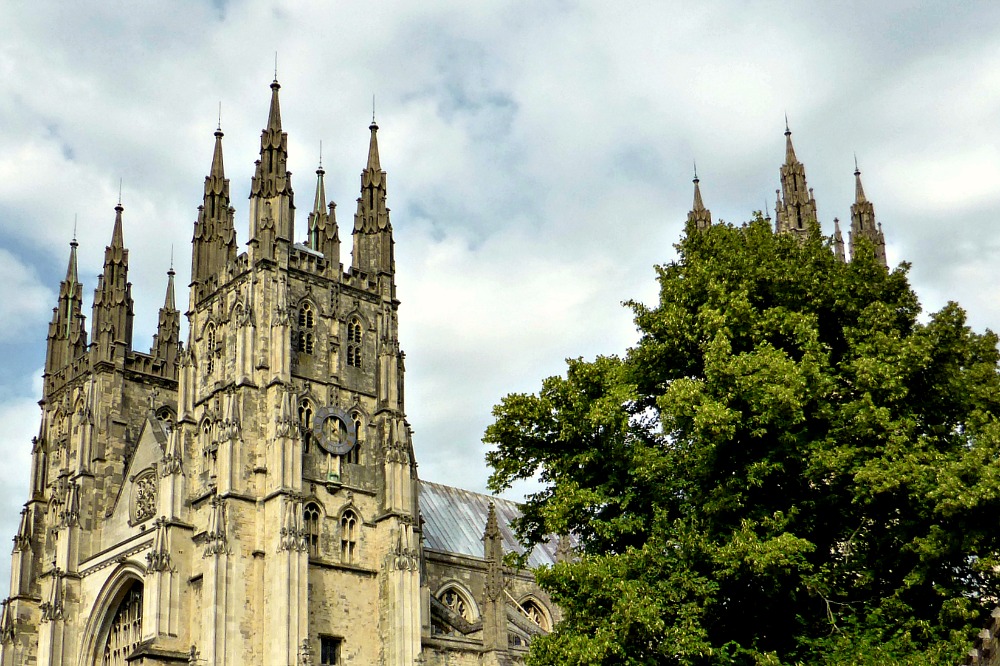
Inscribed to World Heritage List: 1988
Canterbury Cathedral Website || UNESCO World Heritage List Entry
Three religious sites make up this UNESCO entry:
- St Martin’s Church which is believed to have existed as far back as 597 and includes Roman structures from the 4th century. This modest little church is the oldest church in England.
- St Augustine’s Abbey now, unfortunately, in ruins after it fell into disuse after the dissolution of the community by King Henry VII.
- Christ Church Cathedral, the grand mixture of Romanesque and Gothic architecture and the richest collection of stained glass windows in the United Kingdom. It also is the site of the murder of Archbishop Thomas Becket in 1170- believed to be caused by his close friend King Henry II. Oh, those Henry’s eh?
This trio of churches represent milestones in the religious history of Great Britain before the Reformation.
Approximate Travel Time from London: 1 hr 15 min by car | 55 min by train | 1 hr 35 min by bus –>For complete travel information click here.
MARITIME GREENWICH

Inscribed to World Heritage List: 1997
Maritime Greenwich Website || UNESCO World Heritage List Entry
Symbolizing English artistic and scientific endeavours in the 17th and 18th centuries, the group of buildings comprising Maritime Greenwich are well worth the trip to the outskirts of London.
At the top of the hill, you’ll find the Old Royal Observatory, where scientists such as John Flamsteed and Sir Isaac Newton worked, the Time Ball, Meridian Courtyard (where you can stand in two hemispheres at once), and an awesome view of London. At the bottom of the hill, you can visit the first true Renaissance building in Britain- the Queen’s House. It was inspired by Italian style and features the stunning Tulip Staircase. You can see the “Sistine Chapel of the UK” in the Painted Hall at the Royal Naval College. You can also visit the world’s largest maritime museum with thousands of artefacts, maps, and all things nautical at the National Maritime Museum.
There is easily a day’s worth of sights to see at Maritime Greenwich… maybe bring a picnic for the park?
Approximate Travel Time from London: Getting there is half the fun! In addition to Docklands Light Railway and a double-decker bus, you can also start your Maritime adventure and arrive by boat with the Thames Clipper or a sight-seeing cruise. All of these options are within 30 minutes of central London.
ROYAL BOTANIC GARDENS, KEW
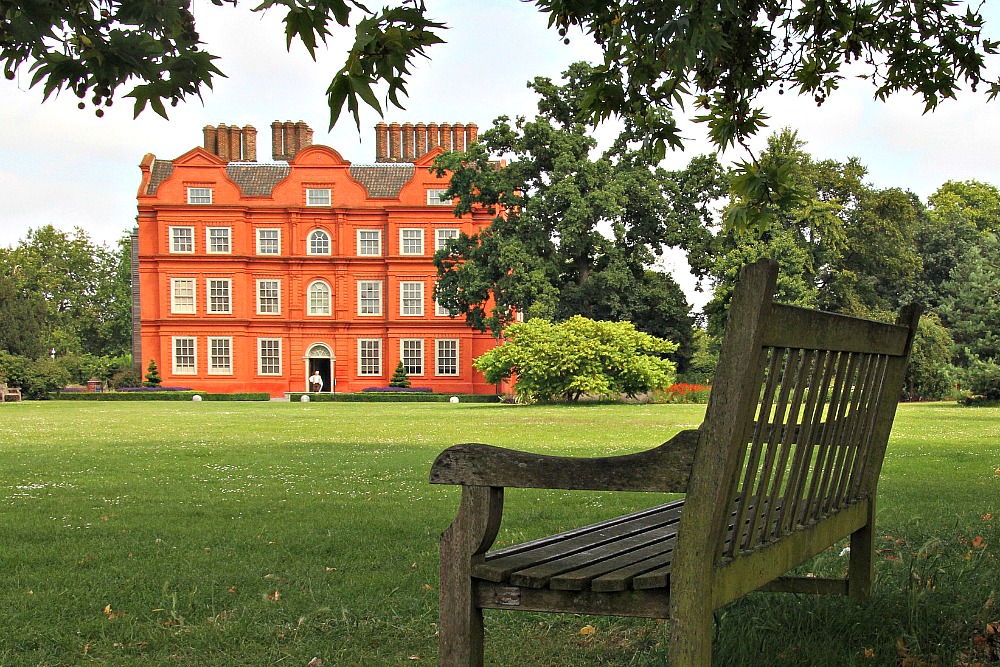
Inscribed to World Heritage List: 2003
Kew Gardens Website || UNESCO World Heritage List Entry
Since their creation in 1759, the Royal Botanic Gardens of Kew have made significant contributions to the study of plant diversity and economic botany. The first garden was for medicinal plants, but their collections have grown exceptionally rich and diverse to promote teaching and conservation.
The architectural features and landscape design has also become world known and was completed by the great designers Charles Bridgeman, William Kent, and Capability Brown. They remodelled the earlier Baroque gardens to make a pastoral landscape more fitting to the English style. The Palm House, an iron and glass structure, is one of the most outstanding features of the gardens.
The gardens are ‘royal’ because they combine two royal estates- Richmond and Kew. In addition, three other private estates and their gardens were also included to create the gardens we can visit today, along with providing the oldest building in Kew, the Dutch House of 1631, now called Kew Palace.
Visitors can stroll through so many gardens such as- Winter, Lilac, Secluded, Aquatic, Grass, Duke’s, and Rock Gardens. In addition, there is the Palm House with the world’s largest collection of palms and tropical plants, the ten-storey high Pagoda, and the Treetop Walkway which gives a stunning view of Kew Gardens and the London skyline. All of this just sounds so amazing and absolutely begging to be visited with a picnic…and a camera. I can’t wait for my own visit to this UNESCO site.
Approximate Travel Time from London: Within 30 minutes of central London you can arrive by tube (closest station is Kew Gardens Station) or by Thames River Boat from Westminster Pier in the summer. For complete travel information please click here.
READ MORE: Looking for more great UNESCO sites to visit in the UK? Check out this guide to Scotland’s UNESCO World Heritage sites!
Want to save this for later? Click the Pinterest button on the left for a pinnable image!
RESOURCES | PLAN YOUR TRIP TO LONDON
To book flights, rental cars, accommodations, and activities for your trip, please check out our recommended travel providers, favourite apps and websites.
If you’d like to learn more about these, and other UNESCO World Heritage Sites, two great resources I’ve found are:
- World Heritage Sites of Great Britain and Ireland: An Illustrated Guide to all 27 World Heritage Sites (there are actually more than 27 sites now but this is still a great book)
- World Heritage Sites: A Complete Guide to 1,073 UNESCO World Heritage Sites
Some of the links in the post above are affiliate links. This means if you click on the link and purchase the item, we will receive an affiliate commission but this does not affect the price to you. Please read our full disclosure policy here.
